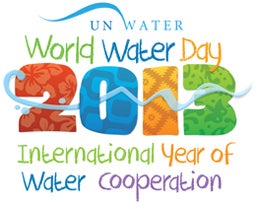 Dr. Robert Kibugi is a Legal/Institutional Expert for Ministry of Water and Irrigation in Kenya and a lecturer at the Centre for Advanced Studies in Environmental Law and Policy (CASELAP), University of Nairobi.
Dr. Robert Kibugi is a Legal/Institutional Expert for Ministry of Water and Irrigation in Kenya and a lecturer at the Centre for Advanced Studies in Environmental Law and Policy (CASELAP), University of Nairobi.
Legal and institutional changes in the Kenyan water sector are not new; the current water law was enacted in 2002. The law introduced extensive changes and reforms, including a separation between water resource management and water services that allows specialized agencies to perform the tasks.
This resulted in creation of the Water Resource Management Authority (WRMA) to manage and regulate water resources, and the Water Services Regulatory Board (WASREB) to regulate water services. The latter regulates the functions of Water Services Boards (WSBs), responsible for developing infrastructure, and those of water service providers (WSPs), which are primarily utilities that purchase water from WSBs and sell to consumers. Beyond water services and resources, the areas of water storage and irrigation, which address harvesting and productive use of water, were not part of the 2002 reforms.
Yet, investment in water storage has been stalled since the mid-1990s and existing capacity has not been adequately maintained, reducing effective storage further. Kenya’s total water storage, including hydropower generation, is approximately 4.1 billion m3 or 103 m3 per capita. Per capita storage drops to 3 m3 when hydropower generation is excluded, which is dismally low compared to other countries (as a point of comparison, North America has a per capita storage of just under 6,000 m3 and South Africa, just under 700 m3). Further, water storage investments are primarily driven by single sector considerations, and growth opportunities from multi-purpose investments are not fully captured.
Upon promulgation of the Constitution of Kenya (CoK) in 2010, the system of national administration was significantly altered, marking a shift from a centralized government, to a system of devolution and decentralization of functions. The CoK created two levels of government: one national, and 47 county governments. Each level of government performs specifically defined functions. The structure of administration is relevant to management of the water sector because: (i) water resources are vested in the national government, but counties have a residual role to implement national policies; (ii) water and sanitation services are the responsibility of county governments. However, because the Constitution has created a basic right to water and sanitation, the fulfillment of this right implies a significant role for the national government in water services and sanitation; and (iii) complexities surrounding water storage and irrigation have not explicitly been identified as functions of either level of government.
In practical terms, the performance of water storage and irrigation functions will likely include specific activities of county governments, thereby creating a potential overlap. Concurrent jurisdiction requires a system of collaboration to avoid and/or manage conflicts. The Constitution also requires establishment of a system of cooperative governance that will ensure devolution is implemented in a manner that is interdependent, and with mutual consultations.
While the 2002 water sector reforms have not been fully implemented, a process has commenced in earnest to review key water sector laws and policies in order to align with the CoK. The Ministry for Water and Irrigation (MWI) has developed a Water Sector Transition Plan that defines the key activities, milestones and timelines that should be achieved in order for the transition process to finalize promptly and successfully. However, a significant part of the reforms process involves the preparation of laws, policies, and establishment of new institutions.
The Government of Kenya, with the support of the World Bank, has developed the Kenya Water Security and Climate Resilience Program (KWSCRP), with a core objective to (i) increase availability and reliability of water supplies; and (ii) improve investment planning and preparation for water security and climate resilience. This involves supporting activities to enhance water sector reforms, planning and management of the sector. The KWSCRP has been designed to support activities throughout the reform process that will prepare and implement the (i) Water Sector Transition Plan, (ii) legal and institutional reforms highlighted earlier, and (iii) enhancement of capacity of water sector institutions through technical assistance, and training.
Preparation of the KWSCRP, nearly complete, has involved significant consultations with key stakeholders in the water sector in order to identify how best to structure support to the reforms. A key challenge will be how to implement the transfer of water functions and roles from the national government to county governments effectively, and how to ensure smooth performance of concurrent functions.
For this reason, support to activities that will enhance the capacity of institutions and staff to perform their statutory mandates and technical functions is central to the support extended through the KWSCRP. This support is complemented by other elements of the KWSCRP, including activities to support water sector planning and management, which includes activities to build the specialized technical capacity in water sector institutions.


Join the Conversation